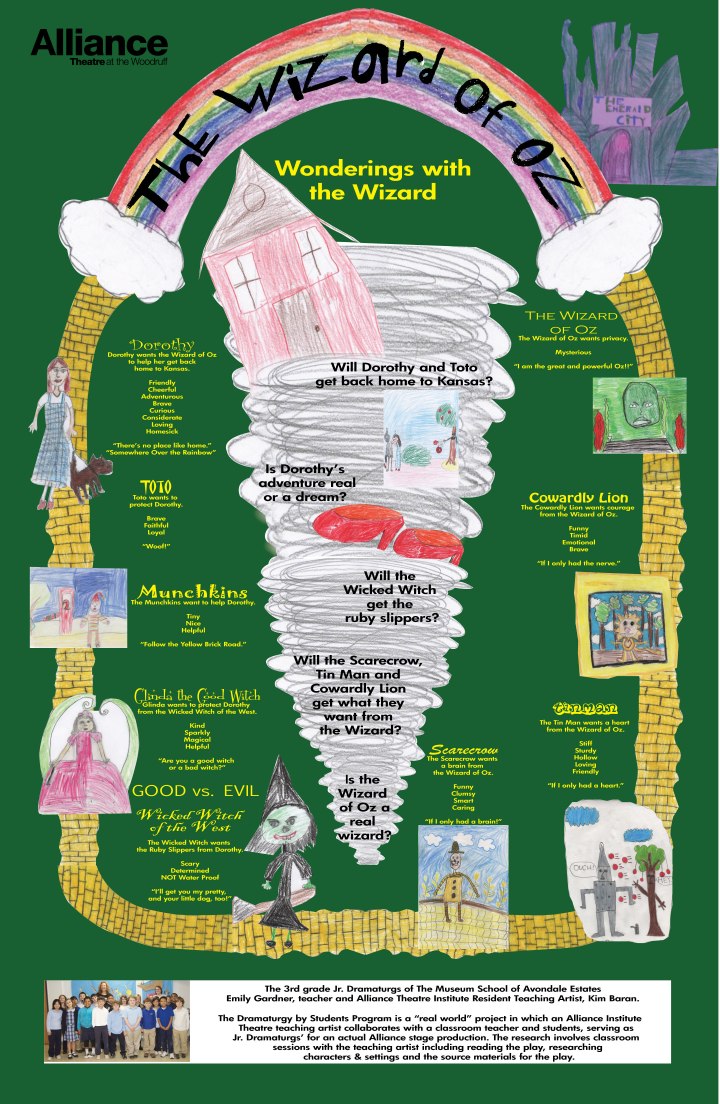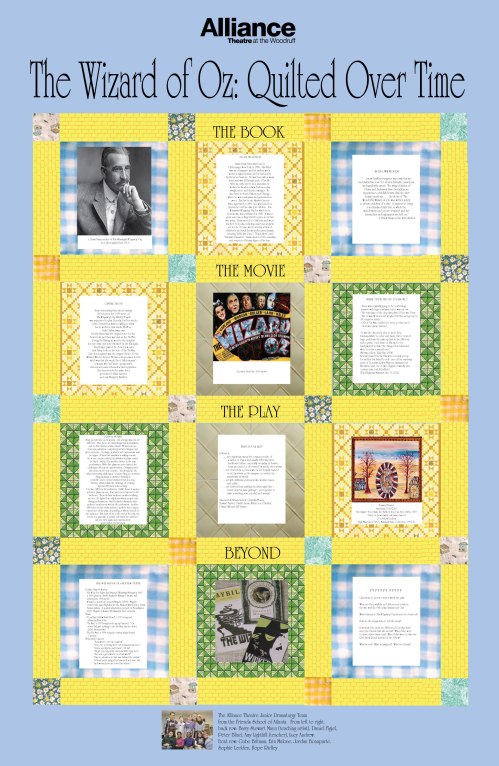
Cursed with playing doudy middle-aged characters in school productions, I knew going into my junior high auditions for The Pirates of Penzance that the best I could hope for was Ruth, the foolish old maid. So I went for the part, and I got it. Because of my new role, my brother gave me the complete libretto as a Christmas gift. It was heartening to realize that Ruth, jostling with pirates, was at least interesting and, possibly, funny. And because I could, I compared the original to our version of the show. Although it wasn’t bad, I realized that one of our scenes had been cut so badly that it didn’t make much sense. I lobbied for lines to be put back in the script (lest you think I was line greedy, none of them were Ruth’s). Then I wanted to know about other Gilbert & Sullivan pieces. I got books from the library and poured over G&S anthologies and histories. No one called me a dramaturg, but The Pirates of Penzance was most likely my first entry point into dramaturgy. I loved it.
Atlanta’s Alliance Theatre provides a more obvious entry point into dramaturgy: the Dramaturgy by Students, K-12 program. It began in 1999 by education director Carol Jones and was designed to be a “challenging authentic learning program.” Working first with an Alliance dramaturg and then a freelance dramaturg, Jennifer Hebblethwaite, the program now works with gifted and talented students who learn about theatre and research through working on a play or musical. For younger students, that has been the annual children’s show; for older students, it has been a mainstage production.
Planning begins early. In the education department’s summer seminar, students who have already been part of the program preview for teachers what the process is like. Next, the teacher and a teaching artist identify what is most applicable or useful for the class and decide on how to focus the students’ research. They also determine early on what the research’s final format will be, whether a dramaturgy notebook that is used in rehearsal, a lobby display, or a performance for their school’s kindergarteners or first graders who will also see the show.
On the first day in the school, the teaching artist and class read the play aloud. For younger grades, the teaching artist focuses primarily on character; with older, the focus is on plot, theme, genre, and applying Aristotelian vocabulary to their textual analysis of the play. Younger grades have created a ‘living dictionary’ they perform for fellow students so that they don’t get confused with any of the language in the play. Dramaturgy students have not recently participated in rehearsals, but they might meet with artistic staff, usually the director, particularly Rosemary Newcott. In some years, students have given the production staff a film of them discussing the characters. Each participating school’s name is acknowledged in the program, and the lobby display includes the names of each individual student who worked on it. After seeing the play, students have a reflection session in which they can discuss what they thought about the production and in what ways they can see the effects of their research. They are not shy sharing their perspectives on the show, and the theatre loves the feedback.

A class of dramaturgy students, their teacher, and teaching artist Kim Bowers-Rheay presented their work at the recent conference of the Literary managers and Dramaturgs of the Americas (LMDA) conference http://www.lmda.org/events/conference. Students talked about differences they had found comparing the film to the novel (like the Dainty China country in the novel, and silver v. red slippers). They shared skits they had created to introduce key characters to younger grades. Their Wizard of Oz set designs and character descriptions were dramaturgically based and insightful. Maya talked about her obsession to find out what kind of dog Toto was (“a brindle Cairn Terrier” a dramaturg in the audience shouted out). Like the professionals in the room, Lizzie also had to define the word “dramaturgy” to her friends, which ultimately she described as “furthering minds about theatre.”
The Alliance doesn’t know of any other theatre doing work like this, and, as a theatre with “a long history of employing fulltime dramaturgy staff, they are proud of the creative, engaging role dramaturgy plays there. If you’re interested in learning more, Alliance will be sharing more about the Dramaturgy by Students, K-12 program at AATE. August. There will also be a DVD available about the project. See http://alliancetheatre.org/Education/Institute-For-Educators/Dramaturgy-by-Students.aspx